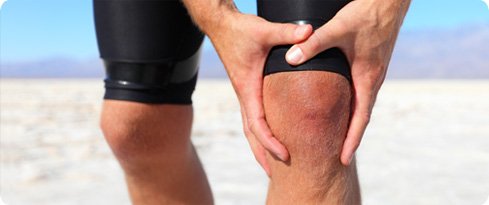Your views

Your feedback is vital to us as we continue to increase the quality of our services.
You are here:
Date: 27 January 2025
Time: 17:10

Tissue cell and arthritis link discovered
Story posted/last updated: 13 June 2019
Pioneering research, supported by organisations including University Hospitals Birmingham NHS Foundation Trust (UHB), could lead to targeted therapies for types of arthritis.
The research, published in Nature on Wednesday 29 May 2019, shows for the first time that different types of fibroblasts – the most common cells of connective tissue in animals – are organised in different layers in the joint and are responsible for two very different forms of arthritis; osteoarthritis and rheumatoid arthritis.
Targeted therapies could alter the behaviour of fibroblasts to reduce inflammation and tissue destruction in these two diseases without the need for long-term immunosuppression or joint replacements, say the scientists.
The research, led by scientists at the Universities of Oxford and Birmingham, was supported by Wellcome Trust, Versus Arthritis, and NIHR Birmingham Biomedical Research Centre, based at UHB and the University of Birmingham.
The research is part of the Arthritis Therapy Acceleration Programme (A-TAP), a joint alliance between the Universities of Birmingham and Oxford, which aims to ensure that world-class basic science observations are accelerated into early-phase experimental therapy for patients.
Chief investigator Professor Chris Buckley, of the University of Birmingham’s Institute of Inflammation and Ageing and Director of Clinical Research at the Kennedy Institute at the University of Oxford, said: “If we compare fibroblasts to soil, this research has shown for the first time that not all soil is the same.
“Just as there are different layers of soil in our gardens – top soil and subsoil – there are different types of fibroblasts in our joints – and each layer seems to be associated with a different type of arthritis.
“From a research perspective this is exciting, but the clinical implications are also very important too. For the first time, we have identified two different types of fibroblasts in the joint, which, just like the different types of soil, lead to different types of arthritis.
“The top soil is what goes wrong in osteoarthritis, whereas in rheumatoid arthritis it’s the subsoil that is at fault.
“When patients are seen in clinic and we can’t help them, it motivates us to think creatively about how we conduct our research and classify disease.
“We have now discovered a new way to classify, and therefore treat, arthritis based on the underlying cell, rather than just the clinical features and genes involved.
“Current therapies work like weed killer – they kill the weeds but the weeds come back if you don’t continue to apply the weed killer. Our research will facilitate research aimed at changing the top soil, subsoil – or both – to treat arthritis.
“To know we are getting closer to offering patients new solutions is very exciting and we are doing it because we are finally looking at diseases using a process-driven cell based approach through the A-TAP project.”
Two recent technical and clinical advances have helped lead to the researchers’ discovery: minimally invasive biopsies and single-cell sequencing. These two developments have allowed the research team to investigate fibroblast cells and their location in the joint as never before, ultimately identifying and describing the biology of distinct subsets of fibroblasts responsible for mediating either inflammation or cartilage/bone damage in arthritis.
First author Adam Croft, NIHR Academic Clinical Lecturer in Rheumatology at the University of Birmingham, adds: “Rheumatoid arthritis is challenging to treat. It causes chronic inflammation resulting in pain and swelling and, also over time, damage to the joint. This is due to the body’s own immune system attacking the joints, which leads to an influx of immune cells in the lining of the joint.
“Current treatments target these immune cells either directly or by trying to disrupt the signals that attract the cells to the joint.
“However, these treatments are only preventative and do not provide a cure, they also do not work in all patients and most patients require life-long treatment.
“Thanks to advances in technology we have now, for the first time, been able to accurately investigate the role of immune cells in arthritis and identify those fibroblasts which cause disease.
“We have found that some fibroblasts are abundant in the joints of patients with rheumatoid arthritis, but not in patients with osteoarthritis. Importantly, we found that getting rid of these fibroblasts from the joint altered the environment locally, leading to a reduced influx of immune cells and less inflammation in the joint.
“These findings mean we now have a clear rationale for developing drugs that can target these cells directly allowing us to provide more effective treatment for persistent disease.”

Getting here
Information about travelling to, staying at and getting around the hospital.

Jobs at UHB
A great place to work. Learn why.
news@UHB


RSS feed
Subscribe to our news feed


